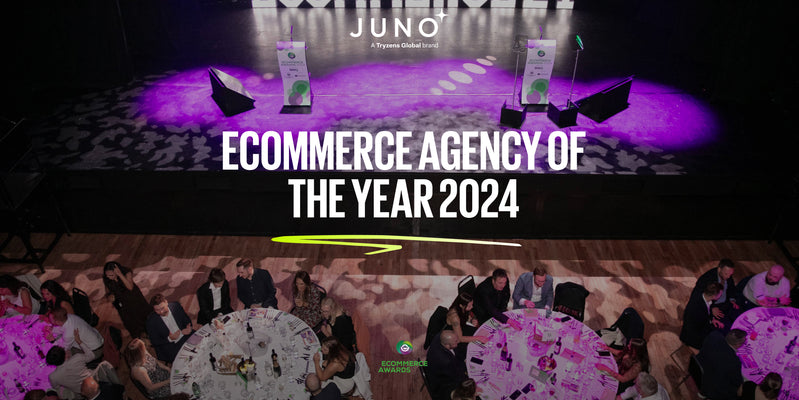Feb 20,2019 Juno Ecommerce Ecommerce Marketing
7 ways to win big with influencer marketing

Influencer marketing is a method of reaching a wider audience on social media platforms through promotion from brand advocates and ambassadors. Put simply, you pay and reward people with lots of (engaged) followers on social media to promote your products with their own content.
These brand ambassadors are often referred to as ‘influencers’ due to the sway they have over their audience. They portray an aspirational lifestyle to their followers, which makes inserting your product or service into their content a highly effective way of growing your brand awareness.
Driven by the rise of Instagram and YouTube, these new-age celebrities have more sway than most brands could ever hope to. In fact, influencer marketing delivers 11 x more ROI than traditional digital marketing efforts, and an overwhelming 94% of marketers think it’s an important part of their strategy.
If you’re not already up-to-speed with influencer marketing, don’t worry – we’ll catch you up.
Why is influencer marketing so effective?
Traditionally when you asked a marketer, sales person or business owner what their biggest driver of sales was, they’d say ‘word of mouth’. Well, things haven’t really changed that much – influencer marketing is simply word of mouth with a modern, digital twist.
One of the reasons influencer marketing and user-generated content are so effective is that they create social proof. Seeing a brand’s popularity helps convince us that it must be good and, as consumers, we tend to follow the crowd.
Influence marketing has proven especially successful in the fashion industry. One explanation for this is that younger, millennial shoppers (a key target market for many online fashion stores) can be turned off by brand ads, and consider them less trustworthy than user reviews. But with influencer marketing, they’re putting their trust in a familiar personality or their peers – not a faceless brand.
So, how can you capitalise on influencer marketing? To make things simple, we’ve laid out seven key ways you can win big with your brand advocates.
7 ways to win big
1) Prioritise ‘The Gram’
Nothing is more synonymous with influencer marketing than Instagram. Although there are a host of platforms you can advertise on, Instagram is by far the leading social platform for influencer marketing. And with upwards of one billion monthly users, Instagram is showing no signs of slowing down.
Recent changes to the platform are making it easier than ever to cash in on influencers. Aside from being able to shop products directly from posts, Instagram has now enabled users to shop through Stories too – opening up a whole new channel for influencers to showcase your brand’s products.
2) Go micro
In the last couple of years, marketers have increasingly turned to micro and nano influencers to represent their brands. Everyone has a different opinion about what constitutes a micro influencer, but it’s essentially someone with a few thousand followers.
So, why would you want to put your brand in front of an audience of a measly few thousand people when there are influencers with hundreds of thousands, even millions of fans?
For starters, it doesn’t have to be just one influencer. A smaller reach means you’ll be working with smaller fees, so you should be able to work with several micro influencers at once. This gives you the chance to tailor different messages to different demographics. A smaller audience also minimises the risk to your brand – if one of your influencers does or says something damaging, your brand won’t suffer an extreme backlash.
It’s also thought that micro or nano influencers are more trusted by their audiences. This is largely because celebrity endorsements are much closer to traditional advertising, and consumers are often more receptive to a recommendation from a relatively ‘normal’ person.
3) Remember, engagement is paramount
It goes without saying that you should track an audience’s engagement on posts relating to your brand. But engagement should also be the key parameter for choosing which influencers you work with.
Having thousands of followers doesn’t mean anything if none of them are engaging with the person’s content. Take a look at the influencer’s previous social posts and see what kind of follower-to-interaction ratio there is.
Inspired by Digital Marketer’s community engagement score, we've established a quick formula to help you identify how engaged your potential influencer's audience is. The lower the score, the better the influencer.
Followers / (likes + (comments x 2)) = engagement score
(Note: comments are doubled due to their engagement value compared to likes).
This engagement formula is best used to compare influencers who have a similar number of followers. To see this in practice, we’ve broken down how this would work using six fashion micro influencers with approximately 15k-20k followers. (We’ve given each one a Disney alter-ego to avoid publicly judging anybody).
| Mickey | 20900 | 56.33 | 341/td> | 15 |
| Minnie | 19000 | 8.68 | 2060 | 64 |
| Donald Duck | 16600 | 42.35 | 314 | 39 |
| Goofy | 16000 | 7.11 | 1965 | 142 |
| Daisy Duck | 15800 | 14.91 | 770 | 145 |
| Pluto | 15100 | 11.82 | 1213 | 32 |
If you were to go solely on the number of followers, you’d probably be asking Mickey or Minnie to represent your brand. But, in Mickey’s case, this might not be the best use of your budget. Although Goofy has almost 5000 fewer followers, their engagement score is much, much better. Goofy’s audience is actively engaged with their posts, which will make them much more receptive to endorsements. Looking at these figures, Goofy and Minnie would be the best choices to represent your brand – providing they’re an appropriate fit.
That’s right! It’s not all in the numbers...
4) Align your personalities
Your influencers should embody your brand’s personality. For example, if your brand is known for pushing boundaries, for having an edge, you’re likely to be interested in working with influencers who know how to cause a little controversy. Similarly, if you’re trying to promote a wholesome image, you’ll need to reach out to influencers that celebrate positivity and wellbeing.
To put it another way, you wouldn’t use the same influencer to promote both a budget-friendly glamour brand and a pricey outdoors brand.
If the influencer accurately reflects your brand’s personality, it’s likely that their audience will align with your own – but it’s still worth considering. Take a look at the people engaging with their posts. If they’re similar to your customers, the influencer is probably a good fit.
When it comes to influencer marketing, nobody does it better than Boohoo. Although they’re known for using celebrity endorsements, a lot of the brand’s success comes down to their student ambassador scheme. In return for free clothes and event invites, student ambassadors represent Boohoo at their college or university.
Students make up a huge portion of Boohoo’s core demographic – and who better to market to them than their most socially-influential peers? Who knows what students want better than other students?
5) Put your trust in their content
Don’t make the assumption that your newly found influencers can make any old content perform. Although you might have guidelines that need to be followed when producing content for your brand, you shouldn’t go as far as creating the content for them. Trust your influencer and give them a little flexibility to do what they do best. You wanted to work with them for a reason: your audience responds to their content, so there’s no need to mess with it.
However, if you are providing guidelines to your influencer, here are some of the things you should include:
- Branded hashtags.
- Coupon codes (if applicable).
- Product placement rules (e.g. not to be featured with other brands or must be from a specific angle).
- Product details to include in the caption (e.g. product name, price or SKU).
- Any language not to be used on branded posts.
- Any imagery not to be used on branded posts.
6) Go beyond socials
You’ve paid for some powerful, influence-led content – now it’s time to make the most of it. If a post is doing well on its original platform, why not harness this and use it elsewhere?
If your Instagram account is flourishing and bursting with influencer content, why not add the feed to your site? Seeing this might just convince a visitor to turn into a customer. You could even take things one step further by using the content in your ad campaigns – although you should agree on this with your influencers beforehand.
7) Build partnerships
Influencers shouldn’t be a pit-stop in your marketing strategy – you should be cultivating long-term, mutually-beneficial relationships with your brand advocates.
This kind of nurtured relationship can turn your influencer into an ambassador for your brand, which looks more authentic to their audience than a one-off post. A brand ambassador also has more of a vested interest in the success of your brand in general, which means they’re more likely to go the extra mile in producing their content – meaning better results for you.
Additionally, a one-off post could easily be missed by a big portion of the influencer’s audience, while multiple posts will have a much wider reach. What’s more, it may take a few posts before a potential customer decides to click through to your site and check out your brand. In fact, research suggests it takes an average of seven interactions with a brand before a customer will make a purchase – so, the more posts, the better your chances.
Although an ongoing relationship should be your end goal, you’ll have to work with a variety of different influencers while you test what works.
Creating a wider strategy
These seven tips will help you kickstart your influencer marketing in 2019.
Although influences can have an incredible impact by themselves, they should form part of your wider marketing strategy – working in tandem alongside blog posts, paid advertising and search optimisation. For more inspiration about what to include in your marketing strategy, take a look at the top 7 digital marketing trends of 2019 and see what’s missing from your list.


